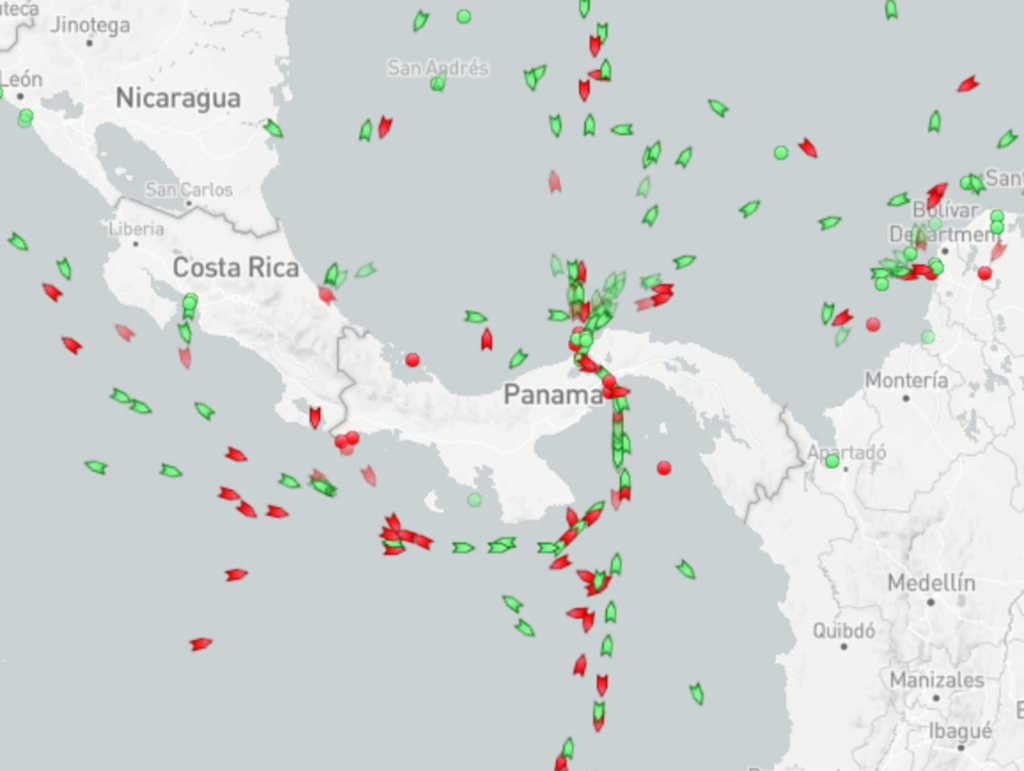On August 11 this blog again noted potential problems with water levels on the Mississippi, Rhine, Panama Canal, and some glances elsewhere. One month later conditions have deteriorated in many places.
S&P Global reports on the current situation along the Mississippi, “Amid lower-than-normal snowfall in the northwestern parts of the US last winter, followed by severe dry weather in May and June, the river’s level has been shrinking since early June. With lower-than-normal precipitation forecast, levels will likely continue to fall in the coming weeks, the US Department of Agriculture said. A diminishing water level is likely to cripple the supply chain in a way similar to the one witnessed last year when nearly 2,000 barges were left stranded during late October, in the middle of what was the peak harvest season for soybeans and corn.” (More and more.) Last Autumn was especially bad for Mississippi flows, in some places the river is already lower than it was in mid-September last year. For example, on September 13, 2022 the river at St. Louis the USGS gage was measuring plus 1.80 feet. Today it is measuring negative 3.4 feet.
In late August CBS news reported, “A severe drought is threatening shipping on the vital Panama Canal, which is responsible for moving 40% of the world’s cargo ship traffic. About two-thirds of the canal’s traffic is either headed for — or leaving — the United States.” Below via MarineTraffic is congestion caused by a drought-induced reduced number of passages per day. Yesterday FreightWaves explained, “Earlier this year, the ACP [Panama Canal Authority] started with water levels that were at the highest levels in the canal’s history. Drought conditions, however, have eaten into the reservoir levels. Water levels in Gatun Lake, which feeds the canal, are at a four-year low and, what’s worse, Panama is halfway through the traditional rainy season and it’s one of the driest on record. Normally at the end of the rainy season in November, the lake’s water level reaches 88.58 feet. Today, the water levels are at 79.6 feet.”
I will close with some better news. The Rhine River has also been treacherously low much of this summer. But in late July rain restored most of the watershed. On August 2 Reuters reported, “Heavy rain has raised water on the river Rhine in Germany to levels allowing cargo vessels to sail fully loaded, data from German inland waterways agency WSA said… “You cannot rule out low water problems again if the summer turns dry but I would not expect serious difficulties for the next few weeks,” one commodity trader said.” Since early August the Rhine at Kaub has fallen about twenty-six centimeters and remains about 33 centimeters above August 2022s record low flow.
Disruption of these literal flows highlight the key role of midstream volumes and velocities for many (often less literal) upstream discharges and downstream fulfillment.
